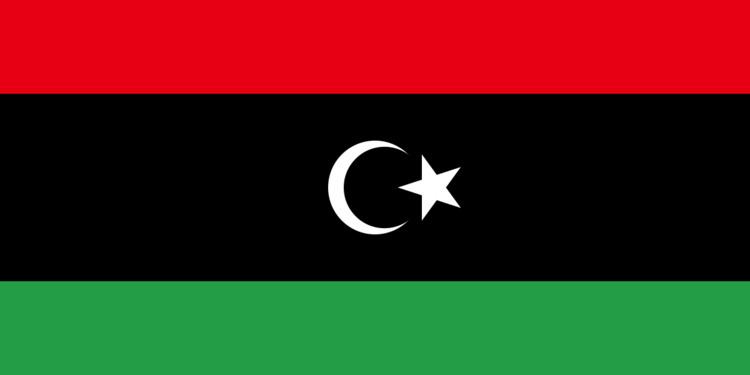 | ||
The 1951 Libyan Constitution was brought into force on 7 October 1951, prior to Libya's formal declaration of its independence on 21 December 1951 as a constitutional and hereditary monarchy under King Idris. The enactment of the Libyan Constitution was significant in that it was the first and only piece of legislation that formally entrenched the rights of Libyan citizens after the post-war creation of the Libyan nation state.
Contents
The Libyan National Assembly drafted the Constitution and passed a resolution accepting it in a meeting held in the city of Benghazi on Sunday, 6th Muharram, Hegiras 1371: October 7m 1951. Mohamed Abulas’ad El-Alem, President of the National Assembly and the two Vice-Presidents of the National Assembly, Omar Faiek Shennib and Abu Baker Ahmed Abu Baker executed and submitted the Constitution to King Idris prior to its publication in the Official Gazette of Libya.
The enactment of the Libyan Constitution was significant in that it was the first piece of legislation to formally entrench the rights of Libyan citizens following the post-war creation of the Libyan nation state. Following on from the intense UN debates, during which Idris had argued that the creation of a single Libyan state would be of benefit to the regions of Tripolitania, Fezzan, and Cyrenaica, the Libyan government was keen to formulate a constitution which contained many of the entrenched rights common to European and North American nation states.
Thus, though not creating a secular state (Article 5 proclaims Islam the religion of the State), the Libyan Constitution formally set out rights such as equality before the law as well as equal civil and political rights, equal opportunities, and an equal responsibility for public duties and obligations "without distinction of religion, belief, race, language, wealth, kinship or political or social opinions" (Article 11).
Following the "Green Revolution" military coup of 1969, led by Colonel Gaddafi, that overthrew the monarchy and the Libyan National Assembly, the Libyan Constitution was no longer in effect. The Green Book put forth by Gaddafi became the foundation of the laws of Libya.
Preamble
The Preamble to the Libyan Constitution sets out the terms under which the union of the regions of Cyrenaica, Tripolitania and Fezzan into Libyan came about:
In the name of God the beneficent, the merciful. We, the representatives of the people of Libya from Cyrenaica, Tripolitania and Fezzan, meeting by the will of God in the cities of Tripoli and Benghazi in a National Constituent Assembly. Having agreed and determined to form a union (1) between us under the Crown of King Mohammad Idris el Senussi, to whom the nation has offered the Crown and who was declared constitutional King of Libya by this the National Constituent Assembly. And having decided and determined to establish a democratic independent sovereign State which will guarantee the national unity, safeguard domestic tranquillity, provide the means for common defence, secure the establishment of justice, guarantee the principles of liberty, equality, and fraternity and promote economic and social progress and the general welfare. And trusting in God, Master of the Universe, do hereby prepare and resolve this Constitution for the Kingdom of Libya (2).
(1) Federal Regime repealed by Law No. 1 of 1963. (2) Name of the State amended to read "The Kingdom of Libya" by Law No. 1 of 1963.'
Chapter II - Rights of the People
Although the Libyan Constitution contained many elements traditional to the regional, such as proclaiming Islam the religion of the State and setting out in detail the terms on which the hereditary monarchy should govern together with the procedure for succession, it did also contain several provisions which entrenched the rights of its citizens to enjoy certain rights common to European and North American nation states, indicating the influence of the key western players in the region, or at the very least, pay lip service to Thus, while stopping short of a secular state (Article 5 proclaims Islam the religion) (at the time, Britain was involved in extensive engineering projects in Libya and was also the country's biggest supplier of arms and the United States also maintained a large airbase in Libya).
Thus, Chapter II (Rights of the People) of the Constitution of Libya set out rights such as equality before the law as well as equal civil and political rights, equal opportunities, and an equal responsibility for public duties and obligations, "without distinction of religion, belief, race, language, wealth, kinship or political or social opinions" (Article 11). Following the coup led by the Libyan army on 1 September 1969 and Idris's subsequent abdication, the Libyan Constitution ceased to have any significance.
The Libyan Constitution
The full text of Chapters I and II of the Constitution of Libya is below:
Constitution of Libya
Chapter I-The Form of the State and the System of Government
Chapter II-Rights of the People
The Libyan National Assembly prepared and resolved this Constitution in its meeting held in the city of Benghazi on Sunday, 6th Muharram, Hegera 1371 corresponding to 7 October 1951, and delegated its president and the two Vice-Presidents to promulgate it and submit it to His Majesty, the Exalted King, and published in the Official Gazette in Libya. In pursuance of the Resolution of the National Assembly we have promulgated this Constitution in the city of Benghazi on Sunday, the 6th day of Muharram, Hegera 1371, corresponding to the 7th day of October 1951.
Mohamed Abulas'as El-Alem
President of the National AssemblyVice-President of the National AssemblyAbubaker Ahmed Abubaker
Vice-President of the National Assembly